When Llandrindod Wells had more flights than Cardiff
- Published
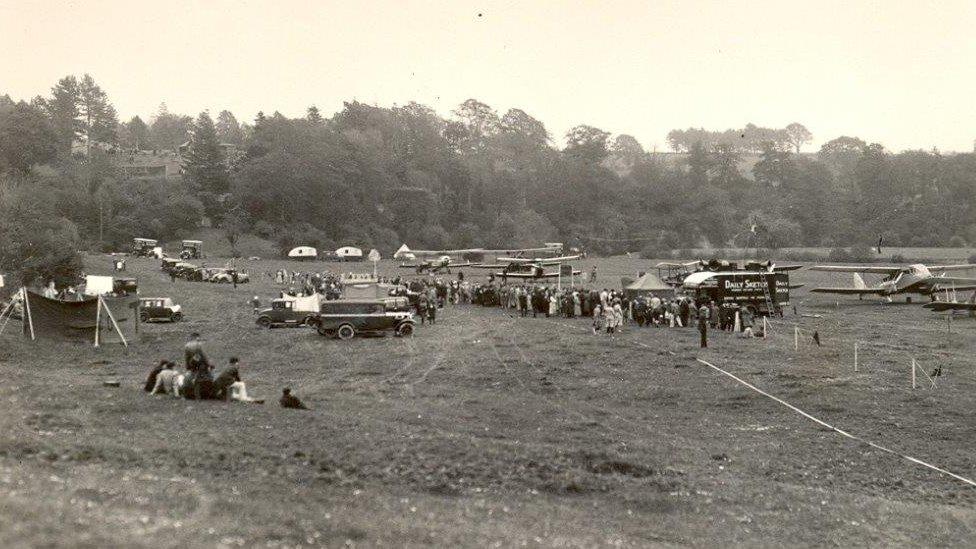
In the 1930s, people could catch a flight from Llandrindod Wells to London, Cardiff, Birmingham and beyond
At a time when we frequently complain about the time it takes to travel to different parts of Wales, it seems strange to imagine being able to catch a flight from a small mid Wales town.
Yet in 1913, just a decade after the advent of aviation, Llandrindod Wells in Powys had its own aerodrome.
A couple of decades later, people could catch a passenger flight to London, Cardiff, Birmingham and beyond.
With a population of just over 5,300 at the last Census, the town, in the historic county of Radnorshire, is an unlikely spot for an air travel hub.
The footage is now accessible via QR codes which can be scanned by smartphones or tablets
Why Llandrindod Wells?
In part, because municipal leaders had big ambitions for the town, according to local historian Phillip Jones.
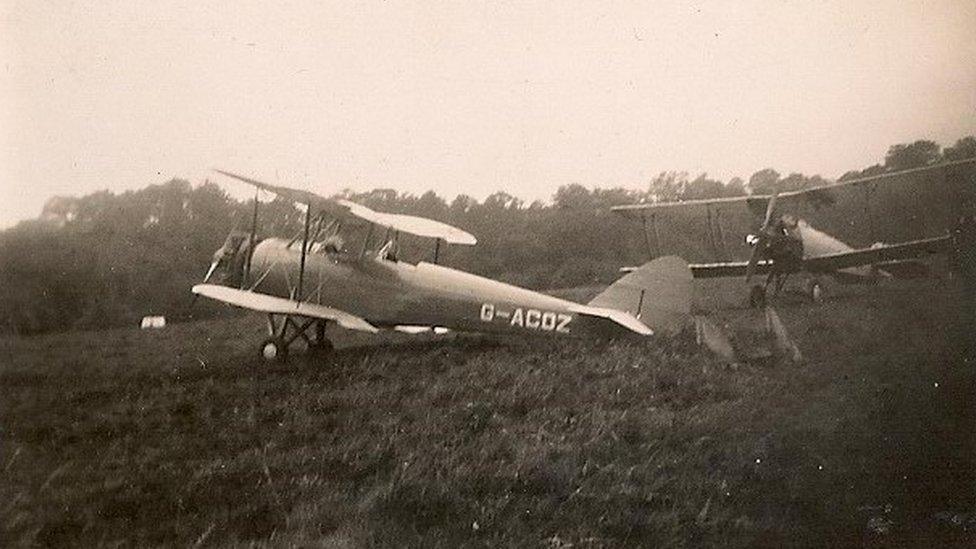
Pre-1930s, the aerodrome mainly catered for exhibition flights
"Llandrindod had an extremely progressive and outward-thinking local council, who before most others, foresaw the potential for air travel to increase the relevance of isolated towns like theirs," he said.

Gustav Hamel, pictured in 1913
Mr Jones, author of Early Birds and Boys in Blue: A Century of Flight in Radnorshire, added: "By 1913 they'd invited renowned pilot Gustav Hamel to carry out a demonstration over what was then little more than a cut strip in a field, and after that the town's reputation was established as the Welsh centre for aviation, before Cardiff and Swansea had even got out of the blocks."
The driving force behind the move was local councillor Tom Norton.
The automobile entrepreneur branched out into selling aeroplanes from his dealership, and to this day the word "Aircraft" can be seen on the front of the town's Automobile Palace building.
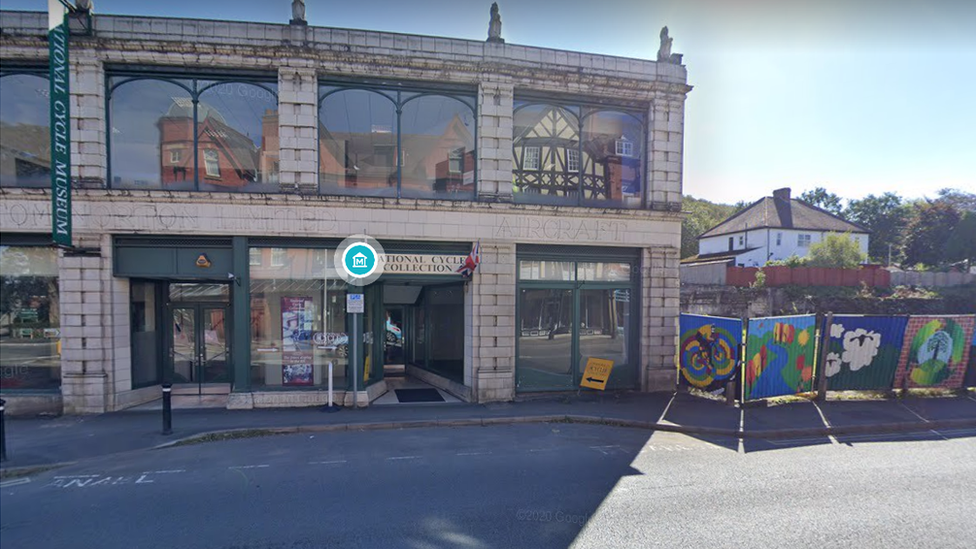
Entrepreneur and councillor Tom Norton branched out into selling aeroplanes from his dealership, with the word "aircraft" still seen on the walls of the Automobile Palace building
The 1920s and 1930s were the heyday of exhibition flying in Britain as the number of trained pilots and aircraft engineers shot up following World War One.
One of those pioneering aviators was Sir Alan Cobham, who flew the first plane from London to Cape Town in 1926.
In 1932 Tom Norton managed to attract "Cobham's Flying Circus" to Llandrindod.
A year later a taxi service began, flying two passengers per trip to London and back for £10 and 10 shillings - about £740 in today's money.
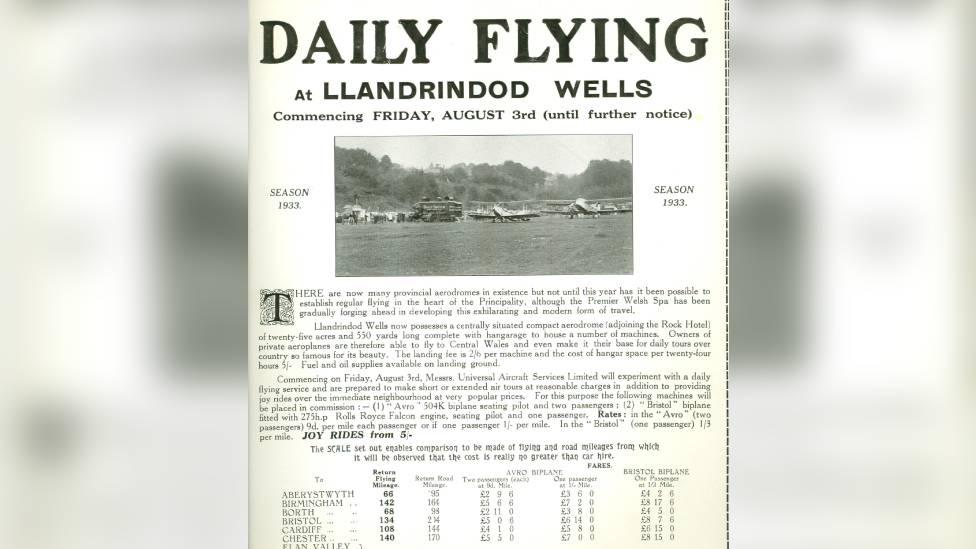
"For the first time it was possible to travel from mid Wales to London for a meeting, and be back in time for dinner"
"It wasn't cheap, probably the equivalent of a workingman's weekly wage per passenger, but it put Llandrindod Wells on the map," added Mr Jones.
"For the first time it was possible to travel from mid Wales to London for a meeting, and be back in time for dinner."
The onset of World War Two saw most private airports close against the threat of invasion, and by the 1940s modern planes were too heavy and fast to land at Llandrindod's short runway.
But recently-discovered footage from the 1930s shows aircraft taking off from the grass strip alongside the River Ithon, in the town's Rock Park.

Visitors can explore the town's history in aviation by visiting Rock Park with a smart phone
Visitors can relive the sight, thanks to the History Points project, which has installed QR codes at Rock Park.
By scanning the code with a smart phone, people can view the video and details of how an airport came to be situated in such an unlikely location.
- Published9 April 2020

- Published24 March 2018
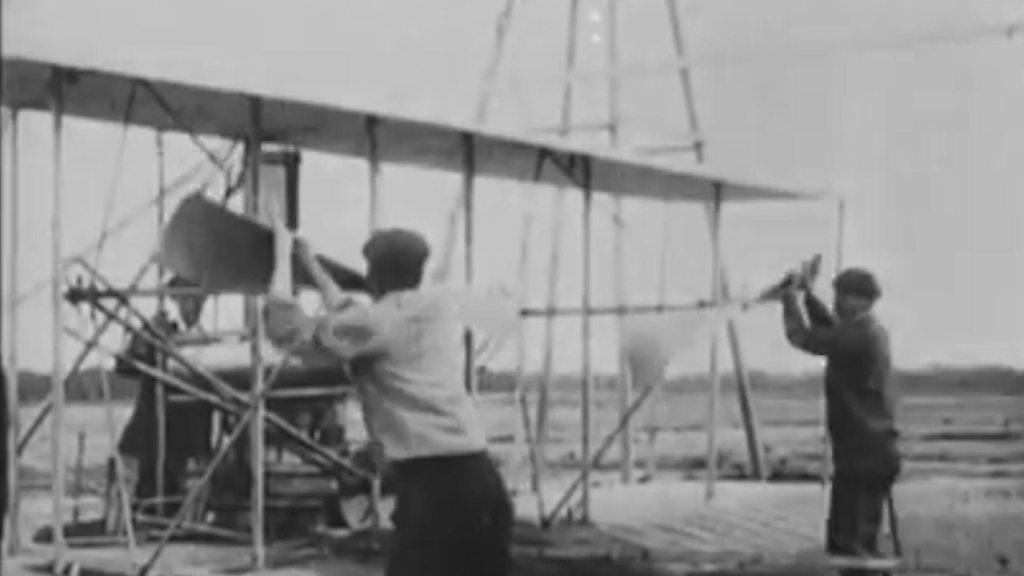
- Published14 February 2013
